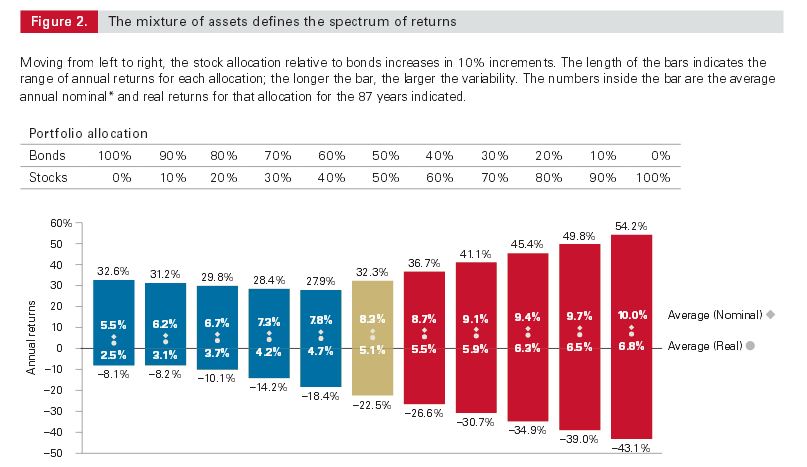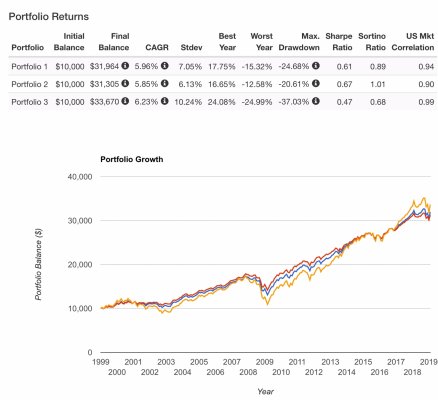I am in my mid 50s. I have saved enough to retire but I plan to work for another couple of years. (I am earning a good income and the job, while it can be stressful, certainly gets easier once you internalize that you are doing it by choice).
I recently sold some stock to reduce my asset allocation to 48/52. (A significant chunk of the "fixed income" is in CDs -- and I know some people here would put that in a third category -- but I have always thought of it as just another part of the fixed income side of my portfolio).
I had been wanting to reduce my stock exposure for a while, but I was reluctant to take the capital gains. However, when the market fell steeply in 2018-Q4, I felt anxious. I guess nobody really knows what asset allocation is right for them until the market falls. So a week or so ago I bit the "capital gains tax bullet" and sold some stock.
My plan is to stay at 50/50, or thereabout, for the foreseeable future, re-allocating as needed. I have no pension, so that is it -- other than my income while I continue to work as SS.
I am comfortable at this level, but I am wondering whether my allocation is typical, or how atypical it is. Are there published data on typical asset allocations? I guess the data would have to been pretty customized to be useful, since it depends on age, how many years left to work, accumulated assets, etc.? But it seems like something someone might have collected data on.
Some would say "what difference does it make what other people are doing-- even similarly situated people -- you should just do what feels right to you." There is certainly merit to that view. But still, I think it is natural for someone to wonder what other similarly situated people are doing.
I recently sold some stock to reduce my asset allocation to 48/52. (A significant chunk of the "fixed income" is in CDs -- and I know some people here would put that in a third category -- but I have always thought of it as just another part of the fixed income side of my portfolio).
I had been wanting to reduce my stock exposure for a while, but I was reluctant to take the capital gains. However, when the market fell steeply in 2018-Q4, I felt anxious. I guess nobody really knows what asset allocation is right for them until the market falls. So a week or so ago I bit the "capital gains tax bullet" and sold some stock.
My plan is to stay at 50/50, or thereabout, for the foreseeable future, re-allocating as needed. I have no pension, so that is it -- other than my income while I continue to work as SS.
I am comfortable at this level, but I am wondering whether my allocation is typical, or how atypical it is. Are there published data on typical asset allocations? I guess the data would have to been pretty customized to be useful, since it depends on age, how many years left to work, accumulated assets, etc.? But it seems like something someone might have collected data on.
Some would say "what difference does it make what other people are doing-- even similarly situated people -- you should just do what feels right to you." There is certainly merit to that view. But still, I think it is natural for someone to wonder what other similarly situated people are doing.


